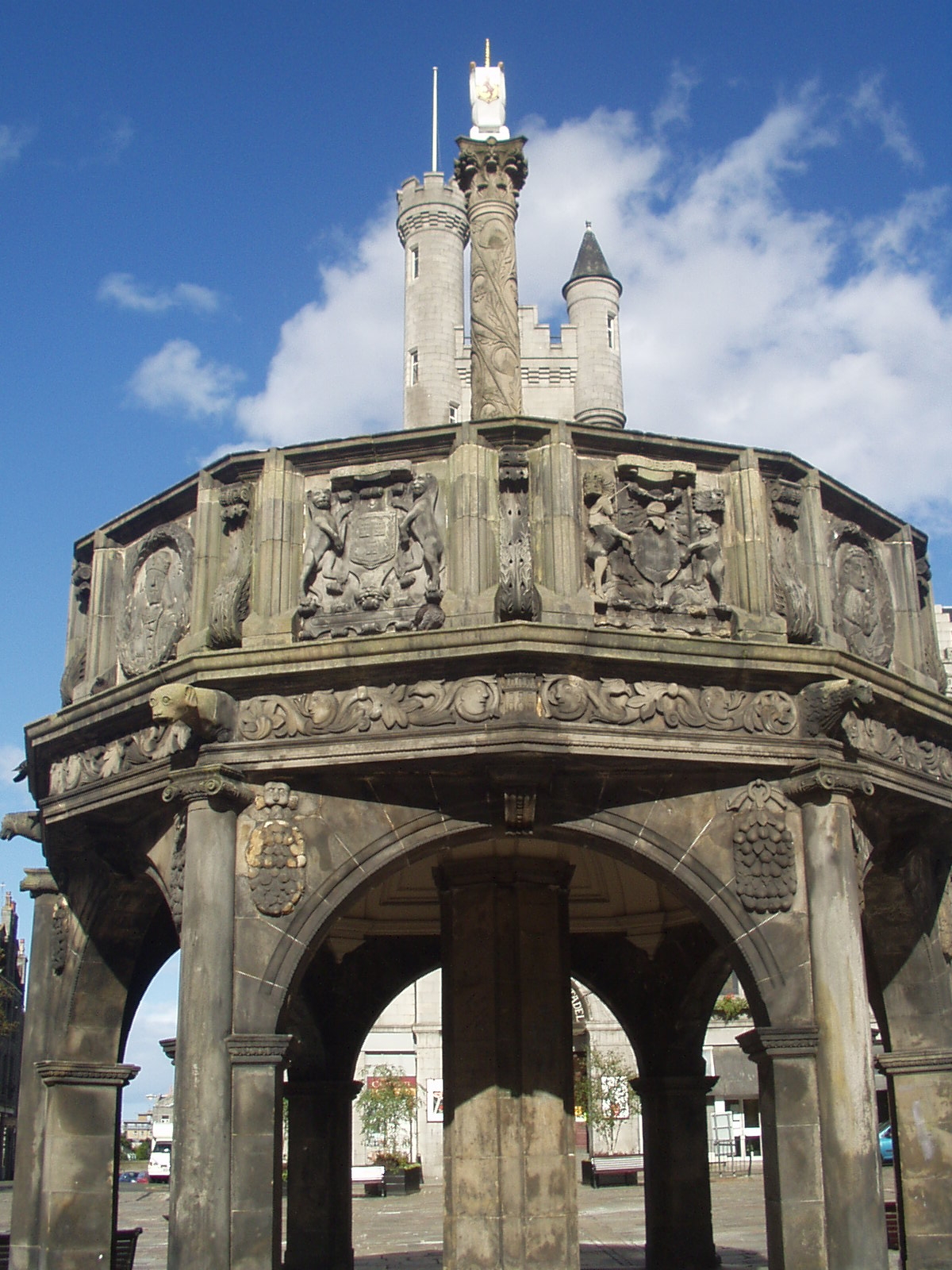|
Crabstane Of Aberdeen
The Crabstane (alt. ''Crabs Stone'', ''Craibstone'', ''Craib Stone'', ''Craibstane'' or ''Crabe Stone'') is a boundary stone that used to mark out part of Craibstone Croft which was located near Hardgate, Aberdeen. The stone has a plaque above it with the inscription as follows: ''The Crabstane. Boundary stone on lands belonging to John Crab, Baillie of the Burgh in 1314.'' ''The stone also marks the site of the skirmish in 1571 between the rival families of Gordon and Forbes and of an engagement in 1644 between the citizens of Aberdeen and the Royalist forces of the Marquis of Montrose.'' The skirmish refers to the Battle of Craibstone The Battle of Craibstone was fought on 20 November 1571 between Clan Gordon and the Clan Forbes on an area that has now been constructed over, found in central Aberdeen, Scotland. It was part of the Marian civil war in which the Clan Forbes supp ... on 20 November 1571. References {{coord, 57.142919, N, 2.108102, W, type:landmark_region: ... [...More Info...] [...Related Items...] OR: [Wikipedia] [Google] [Baidu] |
Aberdeen
Aberdeen (; sco, Aiberdeen ; gd, Obar Dheathain ; la, Aberdonia) is a city in North East Scotland, and is the third most populous city in the country. Aberdeen is one of Scotland's 32 local government council areas (as Aberdeen City), and has a population estimate of for the city of Aberdeen, and for the local council area making it the United Kingdom's 39th most populous built-up area. The city is northeast of Edinburgh and north of London, and is the northernmost major city in the United Kingdom. Aberdeen has a long, sandy coastline and features an oceanic climate, with cool summers and mild, rainy winters. During the mid-18th to mid-20th centuries, Aberdeen's buildings incorporated locally quarried grey granite, which may sparkle like silver because of its high mica content. Since the discovery of North Sea oil in 1969, Aberdeen has been known as the offshore oil capital of Europe. Based upon the discovery of prehistoric villages around the mouths of the rivers ... [...More Info...] [...Related Items...] OR: [Wikipedia] [Google] [Baidu] |
Battle Of Craibstone
The Battle of Craibstone was fought on 20 November 1571 between Clan Gordon and the Clan Forbes on an area that has now been constructed over, found in central Aberdeen, Scotland. It was part of the Marian civil war in which the Clan Forbes supported the King James VI and the Clan Gordon supported Mary, Queen of Scots. So called due to its proximity to Craibstone Croft, the battle was won by the Gordons who forced the Forbes into retreat in approximately one hour with the loss of sixty men. According to news of the battle sent to John Lesley, the secretary of Mary, Queen of Scots, the number of casualties was three-score, 60 men, on each side, and the son of Lord Forbes, Alexander Master of Forbes, was imprisoned at Huntly Castle. According to the chronicle ''Diurnal of Occurrents'', the Master of Forbes accompanied by Captains Chisholm and Wedderburn marched from Cowie to Aberdeen on 20 November 1571. Chisholm and Wedderburn, the Regent's men, commanded two bands of musketeers ... [...More Info...] [...Related Items...] OR: [Wikipedia] [Google] [Baidu] |
History Of Aberdeen
There has been a human presence in the area of Aberdeen since the Stone Age. Aberdeen as a city, grew up as two separate burghs: Old Aberdeen, the university and cathedral settlement, at the mouth of the River Don; and New Aberdeen, a fishing and trading settlement where the Denburn entered the Dee estuary. Pre-1136 Aberdeen was first settled by hunter-gatherers around 6000 BC, who established themselves around the mouths of the river Dee and river Don. Around 2000 BC the Beaker People, who built the mysterious stone circles that can be found in the Aberdeenshire area, arrived from the Rhine lands. 400 BC saw Celtic migration to the area from the north of Scotland. The Romans arrived in Aberdeenshire in the first century AD. Agricola, the Roman governor of Britannia, led a force of some 40,000 men into Caledonia in 84 AD. They fought and defeated the united armies of the Picts in the Battle of Mons Graupius, near the peak of Bennachie in Aberdeenshire. After the Romans lef ... [...More Info...] [...Related Items...] OR: [Wikipedia] [Google] [Baidu] |
Buildings And Structures In Aberdeen
A building, or edifice, is an enclosed structure with a roof and walls standing more or less permanently in one place, such as a house or factory (although there's also portable buildings). Buildings come in a variety of sizes, shapes, and functions, and have been adapted throughout history for a wide number of factors, from building materials available, to weather conditions, land prices, ground conditions, specific uses, prestige, and aesthetic reasons. To better understand the term ''building'' compare the list of nonbuilding structures. Buildings serve several societal needs – primarily as shelter from weather, security, living space, privacy, to store belongings, and to comfortably live and work. A building as a shelter represents a physical division of the human habitat (a place of comfort and safety) and the ''outside'' (a place that at times may be harsh and harmful). Ever since the first cave paintings, buildings have also become objects or canvasses of much artistic ... [...More Info...] [...Related Items...] OR: [Wikipedia] [Google] [Baidu] |



